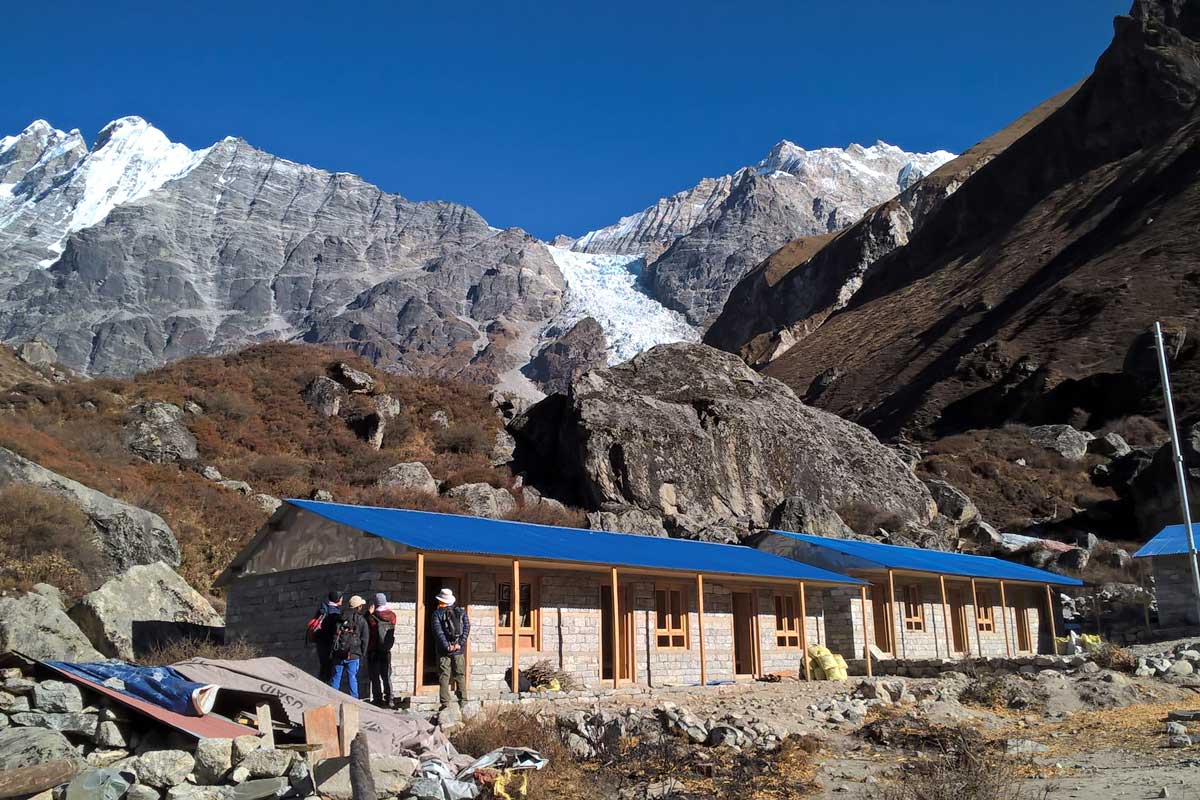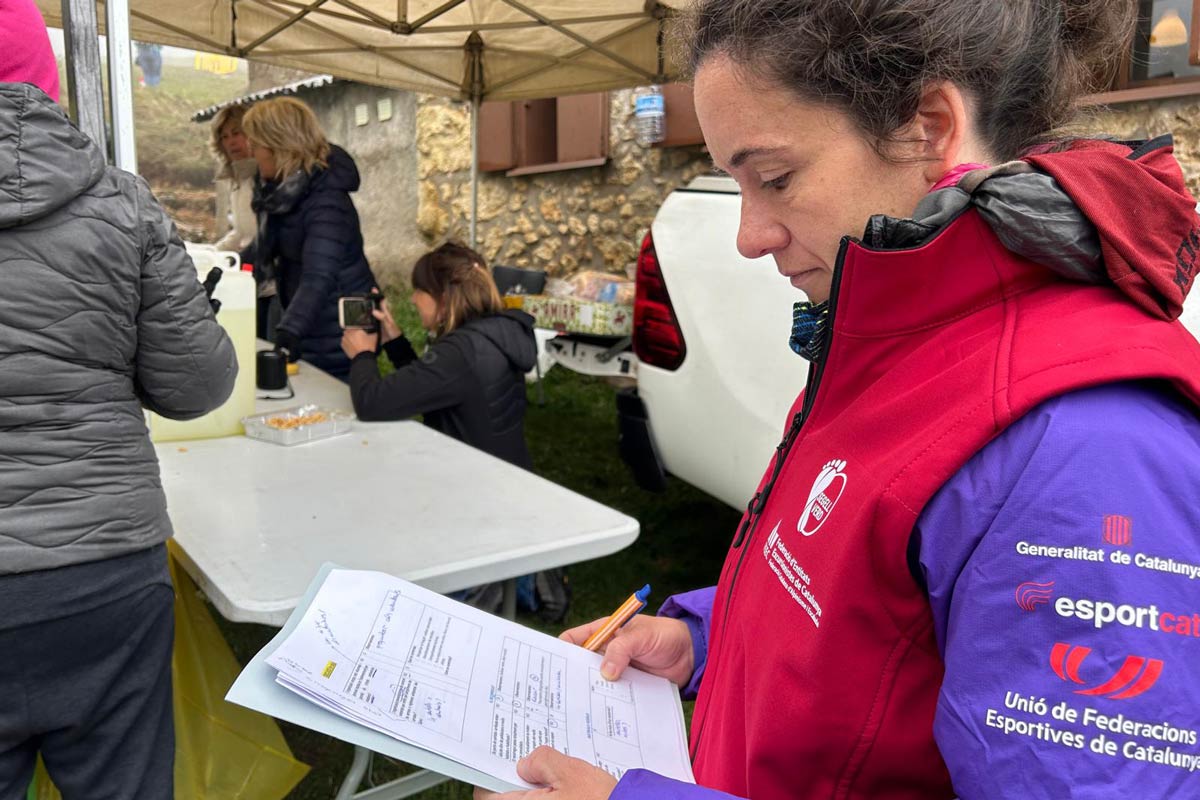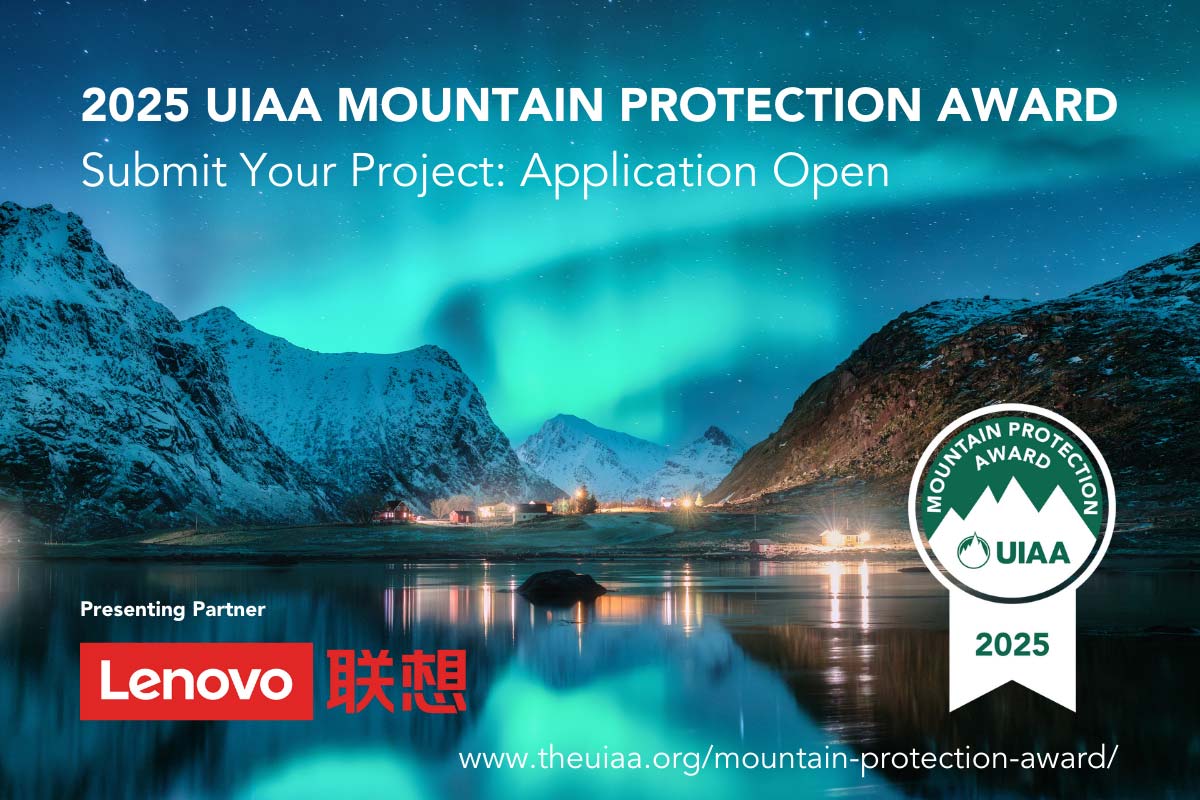2018 Nominee
PROJECT INFORMATION
RE-NOMINATION
Project Status: April 2015 – December 2020
Location: Nepal Office: Cumbria, UK
Contact: Doug Scott, CBE
Email – Facebook – Website
GOALS AND OBJECTIVES
Community Action Nepal is a charity and NGO/INGO which has been operating in Nepal for over 20 years. It has an excellent track record of working with local communities in the mountainous areas of Nepal, raising their standard of living and strengthening indigenous community-based culture. CAN seeks to improve the lives of the mountain people of Nepal by developing ‘grass roots’ health posts, schools, community development and income generation projects.
The charity was set up by former UIAA Management Committee member Doug Scott CBE, the first Briton (with Dougal Haston) to climb Everest in 1975, as he wanted to give something back to the mountain people of Nepal who had helped him to climb 14 peaks in Nepal. It was a key legacy emerging from the 1975 British Everest SW Face Expedition.
Since the 2015 earthquake CAN’s strategic objective has been to support the recovery of earthquake-affected communities in remote mountain areas by rebuilding vital community assets such as health posts, schools, porter shelters and gompas, while at the same time maintaining core health and educational provision and supporting livelihoods. All our work is driven by a motivation to help protect mountain communities underpinned by the principles of sustainability and the protection of the environment.
RELATIONSHIP WITH LOCAL COMMUNITIES
Our work in marginalised mountain communities in Nepal is underpinned by community development principles. Our work is driven by the needs of the mountain people of Nepal. When CAN agrees to undertake a project it is at the request of the communities themselves- we don’t impose our ideas, we just listen and then help them achieve what they feel they need. Local people are involved in projects from the design stage to completion and beyond.
To avoid donor dependency and to encourage local ownership of projects, CAN insists on the active involvement and commitment of villagers. CAN asks them to contribute match funding ‘in kind’ by providing their labour, expertise and local materials. CAN also helps communities to help themselves by supporting income generation initiatives.
Example 1: CAN was invited by local communities to take over the running of four government health posts in Nubri in North Gorkha in 2011 and a fur.ther four health posts in 2016. We have consulted closely with the local Health Committees and Mother’s groups to deploy CAN nurses to support essential health care in these communities and to rebuild all the health posts. To support agricultural biodiversity, improved food security, waste management and protection of the environment through education, we have deployed JTA’s (Junior Agricultural Technicians) in November 2016 to develop new model market gardens attached to the health posts. We consulted with the communities who agreed to participate in new training opportunities and to provide a local person (agricultural assistants) to work alongside the JTA’s in each village. Local training has been offered on composting, natural pest control (avoiding pesticides, herbicides) and the promotion of agricultural biodiversity by planting a wide range of vegetable and fruits varieties. Evidence suggests that local people are putting learning into practice in their kitchen gardens.
Example 2: The costs and challenges of waste collection and removal are exacerbated in mountain communities, especially those which are popular with tourists. In December 2017 we met with local people in the Tsum Valley in North Gorkha who are concerned about the impact of tourist waste on the environment. We have agreed to help but have asked the community to develop local solutions and draw on local knowledge to manage the challenge in an environmentally sustainable way. We will play our part by encouraging the Manuslu Conservation Area to ensure that trekking groups contribute to the financing and management of waste they create through fees, provide awareness raising and advocate bring-back-your-own waste behavioural codes.
COLLABORATION WITH LOCAL AUTHORITIES
CAN has an excellent reputation with Nepalese government agencies and has good working relationships with the Social Welfare Council (SWC) in Nepal. This body authorises our projects with a 5-year agreement with CAN in place which is enabling us to consolidate our development work in Nepal and deliver our Recovery Programme. Currently the mountain communities we support are dispersed. In preparation for 2019 when our current agreement expires we have been advised to concentrate our resources in one of two Districts to maximise impact. It is likely that we will focus on North Gorkha and the Tsum Valley, the Upper Langtang Valley and provide ongoing support for the CAN Porter shelters at Machermo, Gorak Shep and Gokyo in the Solu Khumbu.
Prior to the recent local elections in Nepal CAN has worked with Village Development Committees (VDC) structures. With moves towards decentralisation CAN is working more closely with local authorities at municipal level. However, we will continue to work with a range of government departments at provincial and national level. Collaborative relationships are historically strong but links have been intensified post-earthquake. We have worked very closely with the Education department at national level and the Department of Urban Affairs to approve our plans for the rebuilding of schools and hostels and with the District Health Offices (DHO) for matters related to CAN’s delivery of primary health care and the rebuilding of health posts. In North Gorkha we have established good working relationships with the The Tsum Nubri Rural Muncipality, the Nepalese National Trust for Conservation, the Manaslu Conservation Area, Tsum Valley Welfare, Mountain Child and SEEDS Nepal.
As well as working in partnership with communities on the ground, CAN will always work in a spirit of co-operation with other organisations seeking to assist the people of Nepal. For example, we work closely with range of other NGOs and government and international bodies. We have recently delivered programmes for CAFOD, the Big Lottery (UK) and are currently seeking funding from UK Aid.
BEST PRACTICES IN MOUNTAINEERING AND MOUNTAIN-BASED SPORTS
CAN’s work supporting post-earthquake recovery in Nepal is a multi-stranded Programme with all the constituent elements supporting the protection of remote mountain communities and their environment. CAN’s Programme goes beyond business as usual with its multidimensional integrated approach towards mountain protection. Our core work supporting education, health and livelihoods in mountain communities has been underpinned by a commitment to protect the mountain environment.
The livelihoods of 80% of local people in the mountain regions of Nepal are dependent on climate sensitive areas including agriculture, forests, livestock and water. Prior to the scientific consensus about climate change, CAN has supported reforestation programmes and the protection of habitats. It has promoted the use of clean/solar energy in our projects, the installation of hydro and the use of clean burning stoves. In many communities we have installed clean water and sanitation and supported water management schemes to ensure that local water supplies are safe.
CAN has supported land management promoting the use of organic agricultural methods, including composting and natural methods to strengthen pest control and the diversification of vegetables and fruit to improve nutrition and strengthen food security. We have an excellent track record working with farmers to manage livestock and the dangers of overgrazing as well as supporting honey production which supports biodiversity, given the key role of bees as pollinators.
Our DRR work has focused on preparing for future earthquakes with training also focusing on conservation and protecting local eco-systems.
Many of these interventions have had a positive impact on human health. Our Nurses work around contraception is helping to support population control, with evidence from academics that CAN health posts are having a significant impact on local birth rates. Beyond this our work rebuilding and preservation of gompas, stupas, etc, has helped enhance local cultural capital benefiting local people and tourists.
Waste management in remote mountain communities is a real challenge but we have undertaken training about composting of inorganic materials (70% of solid waste generated in Nepal is organic), recycling and safe disposal which does not impact negatively on downstream users. We adopt the ‘Reduce, Reuse, Recycle’ mantra. Community Action Treks educates its clients to leave no environmental footprint and to take out the waste they generate. CAN works with lodge owners in waste prevention and management. We promote sustainable tourism and support Trekking Codes of Conduct, with mountain guides having a key environmental awareness-raising role.
PROJECT MANAGEMENT
In UK the work of the charity is overseen by the Board of Trustees, which is responsible for agreeing organisational priorities and strategy and policies. The Operation’s Director, Doug Scott (unsalaried) is appointed by the Board of Trustees. He has overall responsibility for managing the day to day running of the charity. He is supported by a small team of CAN office staff and works closely with CAN’s Operations’ Director in Nepal, Mr Murari Gautam. CAN Nepal is made up of a Management Committee, chaired by Purna Gautam, with members representing the range of communities where we operate. Our accounts in Nepal are audited independently and submitted to the Social Welfare Council (SWC) on an annual basis.
CAN’s Recovery Programme as we have seen is multi-faceted and is funded in a variety of ways. The majority of our projects have been funded by individual donors, Trusts and foundations, although our recovery work in Kutumsang (where we are rebuilding a primary and secondary school) has been funded by CAFOD. We have also been funded by the Big Lottery (UK) to strengthen health capacity and model market gardens (attached to health posts) in North Gorkha, build demonstration homes in Solu Khumbu and Sindupalchok and to support income generation. The activities funded by the Big Lottery and CAFOD are robustly monitored against implementation plans (including milestones, outputs, outcomes and spend), with other funders happy to fund projects work with lighter touch reporting.
All projects are monitored by our CAN Nepal Operations’ Director in terms of activities, outputs and outcomes, with a Programme Officer in place to support the delivery and monitoring of the CAFOD and Big Lottery funded projects. They are supported in their work by Binita Shrestha our Finance and Admin Officer and an Account Officer. They ensure that all projects are financially accountable with proper audit trails with invoices to evidence spend. CAN staff in Nepal comply with MANGO requirements. All staff have access to training with regular specialist training in Kathmandu for our nurses which is organised our Nurse Managers.
CAN’s Post earthquake Recovery Programme will be completed by late 2019.
OPPORTUNITIES FOR VOLUNTEERS
Ultimately, the best people to protect the mountain communities are the Nepalese themselves. Hopefully we have been able to illustrate how CAN works in partnership with earthquake-affected communities, striving where we can to empower local people and not create donor dependency. Post-earthquake it was inevitable that large-scale resources fundraised by CAN (£3 million) have been required to assist the massive reconstruction effort required but there are very good examples where local people have contributed their ideas, time, skills and local materials to support recover. This has reinforced community ownership within the projects and a tangible partnership working with CAN. Until relatively recently, local people in remote mountain communities where we work have managed to conserve their environment and maintain their livelihoods in some kind of equilibrium, but this is changing as a result of climate change (and the impact of extreme weather), deforestation, food insecurity, out-migration and the negative impact of tourism. As a result of education and awareness raising there are excellent examples where local people are responding to these challenges with great creativity. They are the key people who will ensure that their mountain communities are protected and thrive.
However, volunteers still have a key role as Mountain Protectors.
Example 1: CAN’s sister organisation Community Action Treks (CAT) organises treks in Nepal and where possible CAT plans trekking routes which include visits to CAN projects. In all cases CAT employs local trekking guides who are able to facilitate connections with local mountain people by staying in local lodges or homestay accommodation. This promotes better understanding of the social, economic, cultural, spiritual dimensions of mountain people’s lives. Recently a trekking group returned from the Tsum Valley indicating that they want to champion the CAN projects they had visited and give something back. The form this will take will vary from individual but may include fundraising, skills transfer or volunteering.
Example 2: Protecting human health in mountain communities is a key challenge. In April 2016, a group of 30 medical students from Imperial College London, visited a number of CAN projects and delivered health awareness workshops. The students have forged strong relationships with the villagers and as a result of their efforts a new health post has been funded. The students returned in May 2018 to consolidate their work. CAN also deploys health professionals on a regular basis as volunteers who return to the UK champion the communities they have helped support. Can also deploys teachers and educational specialists.
HOW WE COMMUNICATE
CAN’s communication strategy is multi-dimensional. CAN has a website (www.canepal.org.uk) and we use social media platforms including Facebook and Twitter. We communicate regularly with our supporters by email and produce annual newsletters and reports. Post-earthquake we have produced four reports providing an overview of progress in our sphere of influence which are available online or in hard copy.
Every year CAN organises fundraising lectures across the country which seek to engage with mountaineers, trekkers and walkers. The lecturers include Doug Scott CBE, Sir Chris Bonington and Mick Fowler, with speakers in the past including world renowned mountaineers like Reinhold Messner, Peter Habeler and Alex Huber. As a result of these lectures we reach audiences of between 3-5,000 people a year.
On the second anniversary of the 2015 earthquake BBC Journalist Mike Wooldridge produced a video on behalf of CAN called “The Day the Mountains Shook” and in April-to May 2018 Jon Maguire joined CAN Trustees to film CAN’s recovery work across Nepal. The filmmaker is in the process of producing a film for forthcoming Mountain Festivals about CAN’s work and a number of thematic video shorts.
We undertake a range of high profile fundraising events to expand our profile, with a mountaineering team recently climbing to the North Col of Everest in support of CAN. They hope to raise over £100,000 to support further reconstruction work in North Gorkha. We think that UIAA could helpfully support our communication efforts by including information about CAN’s mountain protection work on its website.
RETURN TO 2018 UIAA MOUNTAIN PROTECTION AWARD PROJECT PAGE



